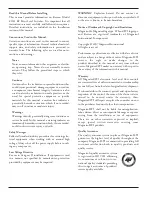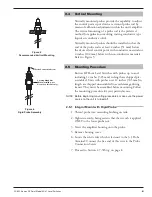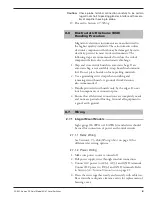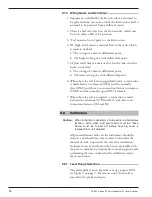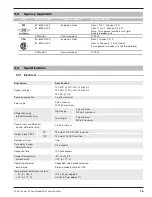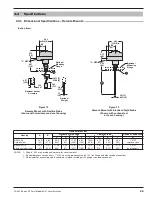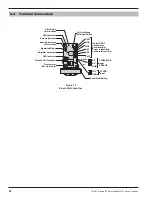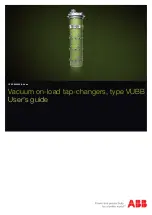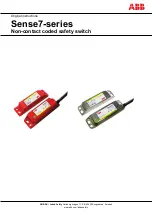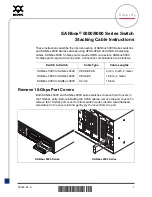
13
50-605 Kotron RF Point Model 80/81 Level Switches
2. Set the fail-safe mode for the alarm relays:
a. In low level fail-safe mode, the alarm relay will be
de-energized when the material level is BELOW the
alarm set point.
b. In high level fail-safe mode, the alarm relay will be
de-energized when the material level is ABOVE the
alarm set point.
3. Energize the instrument. The calibrate LEDs will be on
regardless of the settings of the fail-safe switches or time
delay setting. Relays set in the low level fail-safe (LLFS)
mode will be energized and there will be continuity
between the common (CM) and normally open (NO)
relay terminations. This can be checked with an ohmmeter
or other suitable continuity checking device. Relays set in
the high level fail-safe (HLFS) mode will be de-energized
and there will be continuity between the common (CM)
and normally closed (NC) relay terminations.
4. If the vessel is not filled to the desired set point, increase
level of material to the required set point.
5. Turn the zero adjustment counterclockwise (CCW) until
LED indicator goes off (the relay will change state), then
turn the control slowly in the CW direction until the LED
indicator again comes on. Repeat this on–off procedure
several times and leave the LED indicator on. The narrow
differential alarm point is now calibrated.
2.8.5 Zero and Span Adjustment
2.8.5.1 Wide Differential — Vertical Probe Mount Only
1. With the probe installed in the vessel and the process
material at the desired low level, turn both the zero and
span adjustment on the left hand side of the printed
circuit board clockwise a minimum of twenty full turns or
until a clicking sound is detected. If the process material is
not at this point, the material level must be changed until
this point is reached.
2. Set the fail-safe mode for the relay: (Be sure Fail-safe
Mode Selection has been set correctly).
a. In low level fail-safe (LLFS) mode, relay is de-energized
on rising level and remains de-energized until upper
span point is reached.
b. In high level fail-safe (HLFS) mode, relay is
de-energized on falling level and remains de-energized
until lower zero point is reached.
3. Energize the instrument. The calibrate LED will be on
regardless of the position of the fail-safe switch.

